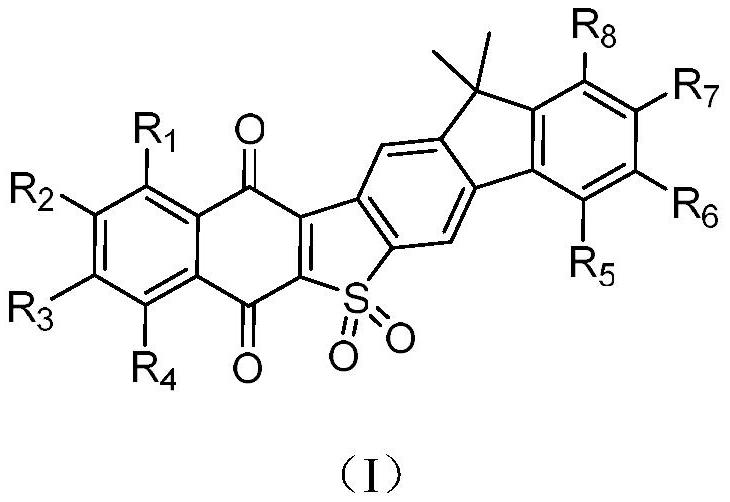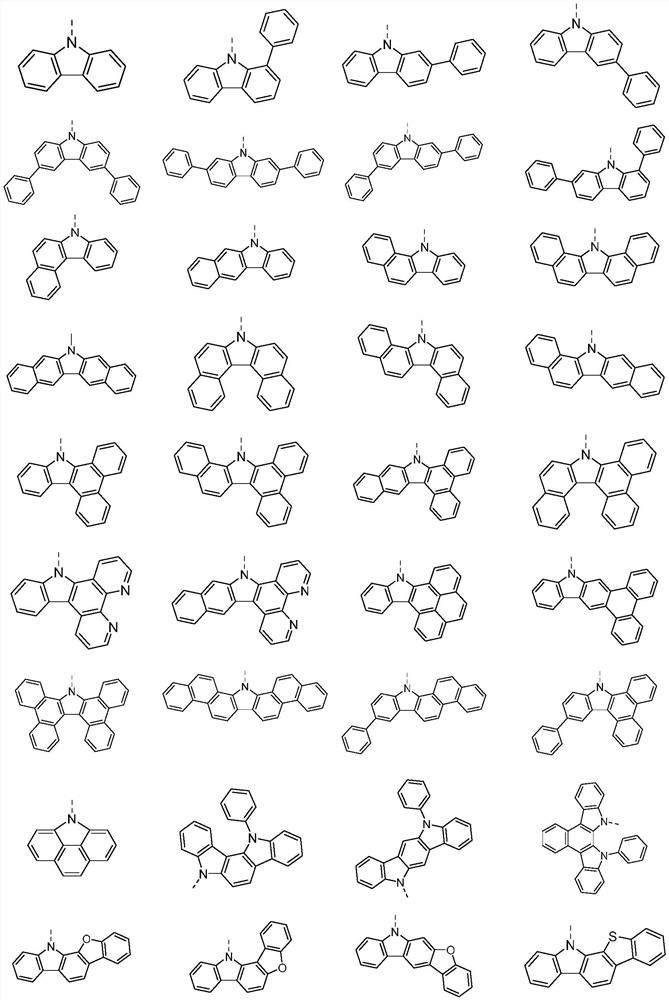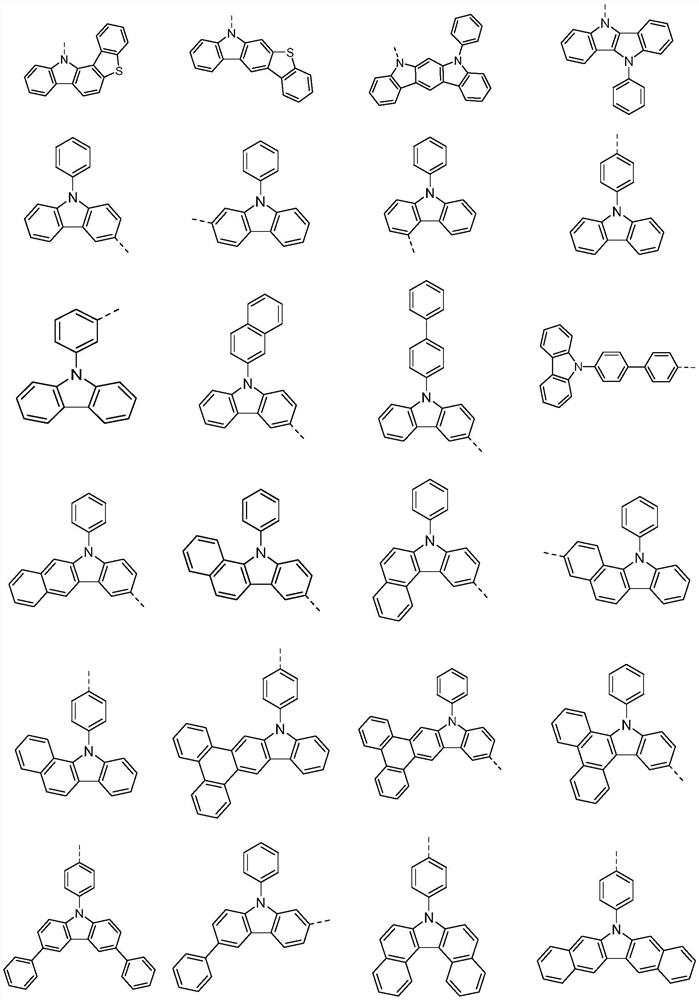Organic material and application thereof in OLED device
A technology of organic materials and devices, applied in the field of organic electroluminescent display, to achieve high thermal stability, high film-forming stability, and the effect of improving photoelectric performance
- Summary
- Abstract
- Description
- Claims
- Application Information
AI Technical Summary
Problems solved by technology
Method used
Image
Examples
preparation example Construction
[0033] According to the preparation method provided by the present invention, those skilled in the art can use known common means to realize, such as further selecting suitable catalysts, solvents, determining suitable reaction temperature, time, material ratio, etc., the present invention is not particularly limited to this . Unless otherwise specified, the solvents, catalysts, bases and other raw materials used in the preparation process can be synthesized through open commercial channels or methods known in the art.
[0034] Synthesis of Intermediates M1~M16
[0035] Synthesis of Intermediates M1 and M2
[0036]
[0037] The synthetic route is as follows:
[0038]
[0039] The specific operation steps are:
[0040](1) Add dichloromethane (200mL) and aluminum trichloride (29.3g, 0.22mol) to a 2L three-necked flask equipped with mechanical stirring, start stirring, and add 4-bromophthalic anhydride (22.6g, 0.1mol) in dichloromethane (150mL), stirred at room temperat...
Embodiment 1
[0087] The synthesis of embodiment 1 compound 1-5
[0088]
[0089] The synthetic route is as follows:
[0090]
[0091] A 2L three-neck flask equipped with a magnetic stirrer, and sodium tert-butoxide (28.8g, 0.3mol), 3,6-diphenyl-9H-carbazole (31.9g, 0.1mol) and 400ml toluene were added sequentially after nitrogen replacement. After nitrogen replacement again, (0.4 g, 2 mmol) tri-tert-butylphosphine and (0.92 g, 1 mmol) tribenzylideneacetone dipalladium were added in sequence. After the addition was complete, the temperature was raised to 85°C. Start to drop a solution consisting of (49.0 g, 0.1 mol) M1 and 100 ml of toluene, heat to reflux (110-120° C.) for 4 hours, and the reaction ends. Adjust to neutral, separate the organic phase, extract, dry, perform column chromatography, and spin dry the solvent to obtain 59.8 g of light yellow solid I-5 with a yield of about 82%.
[0092] Product MS (m / e): 729.20; Elemental analysis (C 49 h 31 NO 4 S): theoretical value...
Embodiment 2
[0093] The synthesis of embodiment 2 compound I-18
[0094]
[0095] The synthetic route is as follows:
[0096]
[0097] Use M2 to replace M1, 9H-tribenzo[a,c,i]carbazole to replace 3,6-diphenyl-9H-carbazole, select an appropriate material ratio, other raw materials and steps are the same as those in Example 1 In the same way, 61.8 g of light yellow solid I-18 was obtained, with a yield of about 85%.
[0098] Product MS (m / e): 727.18; Elemental analysis (C 49 h 27 NO 4 S): theoretical value C: 80.86%, H: 4.02%, N: 1.92%; measured value C: 80.90%, H: 4.06%, N: 1.75%.
PUM
 Login to View More
Login to View More Abstract
Description
Claims
Application Information
 Login to View More
Login to View More - R&D
- Intellectual Property
- Life Sciences
- Materials
- Tech Scout
- Unparalleled Data Quality
- Higher Quality Content
- 60% Fewer Hallucinations
Browse by: Latest US Patents, China's latest patents, Technical Efficacy Thesaurus, Application Domain, Technology Topic, Popular Technical Reports.
© 2025 PatSnap. All rights reserved.Legal|Privacy policy|Modern Slavery Act Transparency Statement|Sitemap|About US| Contact US: help@patsnap.com



